
首页>知识库
| No Plan B – Sustainable or Stranded |
| 来源: |
| 点击量:385 |
| 18.06.2024 |
|
免费下载 In the last couple of years, the word “Stranded Asset” has become more and more common, and the fear associated with it is increasing for building owners as sustainability-based regulations like ESG or increased requirements for carbon reporting become more and more adopted globally.
The stranded asset What is exactly a stranded asset, and how does an asset become stranded? Although the definition can be very complex, there is a simple answer, once asset costs are higher than the revenue we can generate from it, we are in a “stranded” situation, whether we can revert that or not is what defines if the asset is permanently stranded or not. There are many reasons why an asset can become stranded: · Regulation changes – where the asset can’t comply with the new regulation and the owner does nothing or can’t do anything to comply with the new regulation requirements · Poor maintenance – where the asset deteriorates over time and occupants are no longer attracted to that asset · Change of user habits – where the asset might be in a location no longer attractive to occupants or the type of asset is no longer appealing to new occupants · Business environment – where a recession or geopolitical issues make the asset unoccupied · Climate change – where risks derived to climate change make investors not willing to finance the asset on a long-term basis. There are for sure many additional reasons but we will focus on these for now. Out of all these reasons we will mainly focus on the one that is creating the biggest headaches in REITs and building owners in general, which is the regulation changes, but before going there, let’s analyze for a second what the reasons for this are.
The buildings are old:
80% of the built space is over 15 years old, and 15 years ago builders were, in most cases, not incorporating any green specifications or functionalities that would match today’s regulations.
Most of the old regulations and the way we constructed buildings was using a “tick the box” paradigm, rather than a quality focus. Builders and operators in many cases where different companies, and many buildings were built to be sold within a couple years, maximizing the profit, minimizing the cost. Since the construction company was not going to “suffer” the operation issues, they used the minimum possible quality of materials and equipment to meet the minimum standard that would allow them to “tick the box” …
However new regulations are no longer tick-the-box regulations, they are data driven regulations, ESG makes it mandatory to report electricity consumption per square meter, per occupant, per floor, per use type, new air quality regulations make it mandatory to report and store air quality data for several parameters like CO2 levels, PM2.5 levels, chemical concentration levels, etc. so ticking the box “Ventilation system” or “Air purification system” is no longer enough, now we need to measure and if the ventilation system or the air purification systems installed were subpar (which is the case in most old buildings), they will just not comply with the new regulatory requirements. Where do today’s buildings stand? In the last few months, I raised the same questions in several events where I presented, I asked everyone to raise their hand and only drop their hand if they answered “I don’t know” to any of the following questions, actually you can do the same while going through the questions below, let’s see how far down you get! - Do you know the PM2.5 levels in your office? - Do you know the formaldehyde levels in your office? - Do you know if your office CO2 levels are appropriate? - Does your office have virus and bacteria elimination equipment? - Do you know if your working environment is 100% safe? - Do you know which areas in your office are empty at any time? - Are lights, AC, ventilation turning off or entering energy savings modes in those areas? - Do you know how much power is being wasted in your office? - Do you know how much of that power could be saved by adding simple automation systems? If you dropped your hand before reaching the 6th question, you should worry, you might be getting slowly poisoned daily while you work, but you are just in one of the 98% of buildings that don’t have proper air quality monitoring systems or air purification systems. If you dropped it after the 6th question, they you are doing better than 98% of buildings, but might still be just not good enough for new regulatory scenario. If your hand was up by the end of the questions, you should know that 99.8% of all respondents did drop their hand, so you are one of the 2 in 1000 people that left the hand up… (You can put it down now ??), and you should feel safe going to work every morning.
So yes, the summary is that 99% of buildings need to improve or they will go down the stranded path, so real estate asset improvement is going to be one of the world’s largest businesses in the next 10 years. And governments are reacting. Leaving buildings abandoned in cities is not an option, therefore many governments are starting to plan incentives for building improvement and renovations to bring buildings up to a compliance with all new energy consumption and health regulations. For example, Chinese government is creating policies to renovate old office buildings, since many of them have extremely low occupation rates (50-60%), are going head on into becoming stranded and there is no need for the office space, so there is a plan to convert many of those buildings into higher efficiency residential buildings, tackling the underutilized office space and creating more residential options in cities where rental rates are off-the-roof expensive. European governments have been heavily subsidizing and promoting the installation of solar panels in buildings and other energy efficiency measures since most of them are behind the carbon neutrality goals they have agreed to.
How about me So, I own one of these buildings in the above 99%, what options do I have?
Let’s take a look at the stranded and the sustainability cycles, they are the ones that will define whether you will go in one direction or the other, we used data and projections from one of our customers to do the below analysis: The stranded cycle:
Becoming stranded is a process, one that we can slowly go in without even realizing… A tenant leaves, suddenly we have a loss of revenue, to keep afloat we reduce some services… and without knowing, we are immersed in the cycle if we can’t get the occupation rate back up. At this point, less/worse services or maintenance means unhappier tenants, being uncappable to retain them and making it much harder to attract new ones or being forced to reduce rental rates, the future looks grim, especially now that leasing partners are not bringing their customers to your building anymore due to the deteriorated state… but not everything is lost! Let’s learn how to get out of that cycle. The next cycle is the sustainability cycle, the cycle that we want to be in, a cycle that increases our revenue, the quality of our services, reduces our risk and increases not only our yield but also the value of our asset.
At this point, happy tenants want to stay, the new ESG/sustainability based functionality attracts new tenants and our asset becomes “sexy”, the leasing partners will be happy to put their customers into your building!
Data to the rescue How do we make an asset sustainable and more efficient? If we look at new, high performance “anything” we can see the same trend everywhere. Electric cars have over 100 sensors, planes have over 25,000 sensors, very high performance F1 cars have hundreds of sensors and generate several GB of data in a 2 hour race Why? The reason is simple, if you want a high performance asset, you need to understand what is taking place in that asset as well as external events that might be impacting that asset and you need to adapt the asset in real time to those events. Cars adapt to external temperature, pollution, to fuel consumption, to road conditions, etc. to adapt and become more efficient and ensure optimal comfort for their occupants, planes do the same, becoming more fuel efficient and comfortable. But buildings are years behind, buildings built 15 years ago and most of the buildings that were built in the recent years have no sensing equipment, and those that do barely use that data efficiently to save energy or improve occupant comfort. Buildings don’t react to external pollution events, their ventilation systems don’t react to changes in volume of occupants and HVAC systems make usually some places too cold, others too hot depending on where the sun is shining… Time to change this!
Let’s get real. We did a calculation with one of our customers in Shanghai, they have a 20,000 m2 building in a good location and they are charging roughly 6 cny/m2/day (About 0.8 USD at today’s rate) and they are starting to struggle since they are in a 20 year old property and started to see that they could not meet the requirements of most new potential tenants (Air quality, sustainability credentials, net zero plans, governance details, electricity consumption transparency, etc.), so we started working together. We analyzed together from this start point and what the future would look like under the 2 scenarios, the “stay the same” and the “go sustainable”. To be conservative, for this analysis we used the same rental rates throughout all 5 years in both scenarios and only changed the building occupation levels according to how we believed it would change. One important line to look at is the “red line” which is the customer’s break-even line, anything under that line means looking at being stranded right in the face, anything above that line is profit.
Scenario 1. Stay the same: For this scenario we analyzed today’s starting point and estimated how occupation levels would fall if we the building were to stay the same, we all agreed that despite slowly increasing rent levels, occupation would slowly fall from 65% to somewhere in the 40s, this would bring the building to a non-profitable level within 3 years and it would be very hard to bring it out once we got there. We came out to a 29% revenue loss by the end of the 5th year and a much more significant loss regarding asset value.
Scenario 2. Sustainability For the second scenario, we started at the same exact point but increased occupation slowly due to the increase in attractiveness for new tenants, we kept rental rates exactly the same as in the first scenario and just focused on changing occupation levels.
We immediately saw the improvement after 12 months. The time we gave ourselves to implement strategies, train our leasing teams and work with the leasing agents to inform about the new reality of the building. A 45% increase in revenue would also mean a significant asset value increase, providing cheaper access to SLLs (green loans) and increasing the value of your REIT if you own several buildings.
Actually, reality exceeded our conservative expectations. Six months down the road now, the interest in the building has spiked and occupation levels have already increased, there is such a demand for better buildings that when tenants find one at a good location at a reasonable rental rate, they want to take it, and this is going to be the trend going forward.
The biggest business in the next 10 years. Increased Requirements for carbon reporting is causing the amount of stranded assets to increase, leading to pressure for each part of the CRE value chain, all listed companies need to provide sustainability metrics, their subsidiaries also need to provide those metrics to HQ and shortly the providers will need to provide those metrics too in order to be able to calculate carbon footprints in complete supply chain. Companies that can’t provide this information are going to become irrelevant, companies that don’t have the adequate governance will not be able to be providers for the larger companies and companies that don’t meet the social standards will also be left behind. And we just saw that over 98% of people dropped the hand when encountered to the very basic questions, this means that all those companies in a 5-10 year timeframe will need to adapt if they want to continue in business. It is the opportunity of the decade and building operators and FM can be part of the solution or part of the problem, old FM way of solving problems is just not going to cut it.
It’s all about money Great, I agree with all the above, but… who pays for it? The answer is clear, and it is obviously the end user, the tenant, the one who is going to receive the new functionality and the benefits, but we must be imaginative regarding how to do this. In most of my events I ask 2 questions with always the same answers for both: - Q1: Would you pay 10% higher rental rate if the building included air quality management, air quality monitoring, ESG information, sustainability credentials, light and HVAC automation and similar functionalities? o 99% of customers answer with a robust YES - Q2: Would you pay 25,000 USD (Or whatever the amount is regarding the size of the occupied space) today to include the above functionality? o 80% of customers say “NO, we can’t”, most others say Maybe, very few spit out a robust YES So it comes down to linking the solution to the building lease, call it “as-a-service” or however you want to call it, but the reality is that this, in most cases, will only work if we can link it to the lease and spread the cost over the duration of that lease
Making it all come together How do we make it happen with our customers? We always follow a 3-stage approach, which is Measure, Visualize, Automate, the process includes an initial sensing solution to understand where we are, what the issues are, and what needs to be done to solve those problems or improve the overall performance. We follow with advance visualization strategies, using rich, but easy to understand dashboards that will quickly provide a clear understanding on what needs to be done. Once we discuss all these with the customer, the next step is to install hardware and software to improve all areas: Air quality, transparency, energy consumption and occupant comfort.
An important aspect is that we don’t change any of the infrastructure, we don’t replace fan coils, fresh air systems or lights, we just improve their usage and reduce energy waste, automating them to make them operate at higher efficiency levels or shutting them down when not needed, adapting to events, just like an electric car goes into energy recovery mode while breaking or softens suspension automatically when we enter a bumpy road. All this while maintaining optimal comfort, learning the user habits and automatically adjusting to them, all through an AI and ML system, without the need for user intervention. No clumsy apps, just comfort and ease.
Custom made Solution Not every tenant is the same and not all of them need the same solution, so we created a “menu” of options where each tenant could adapt the solution to their needs and the building can offer a “fully-loaded” solution at a higher monthly cost or a “lighter solution” at a lower monthly cost. Happy owner, happy tenant and the flexibility to change at any time. The important thing is to have the information (data) to be able to make an educated decision regarding your needs and your objectives. Measure: We usually start measuring, understanding a situation and occupant habits to provide a solution where we will be quite confident with the end result:
On this example we analyzed the occupation levels during a 2-week period of several areas, and we also checked whether AC and lights were on in those areas. Visualize: We followed with a thorough visualization-based analysis (Done automatically be the system) that offered us a clear view for each point of both occupation levels and equipment usage:
The image shows AC and light usage for over 90% of the time while occupation is only 35%, big room for savings! Automation: After we implemented the energy savings capabilities, we achieved close to 30% savings both in AC and lighting, all of that without changing any lights or AC units, just making everything efficient and of course not impacting comfort in any way. The results were just as expected, we had a happy tenant, with a green story to tell, metrics to send to HQ and a customized solution that they can comfortably pay as part of their rent, happy building owner that did not have to put any money up front to improve the building and attract better tenants. Well inside the sustainable cycle.
Conclusion Sustainability is not an option, the opposite of sustainability is a place we don’t want to be in, but becoming sustainable should also not be an economic burden, it is a journey that needs to be navigated along with your customers, with flexibility. Bringing a building to a healthier, more sustainable, ESG compliant status is not that complicated, or that expensive. ESG, or any other way of calling sustainability metrics are here to stay, your potential customers or your government regulators will demand it and you will be out if you can’t provide it, the longer you wait to set it in motion, the farther behind you will fall. First adopters will win the market. Imagine you own a building and there are 5 similar buildings in your proximity, if one of those buildings becomes healthier and more sustainable, which building do you think tenants will choose? If you dropped your hand to those questions at the beginning of the article, you need to act and you need to act now!
Would you like to know more about how to make your building healthier and more sustainable, attract more and better tenants and get in the sustainability cycle? Contact us!!
About Nevegy Contact Info: info@nevegy.com |
| 返回列表> |
-

加强与业界领先的FM培训和
认证你的技能。

 ifmachinaopen@ifma.org
ifmachinaopen@ifma.org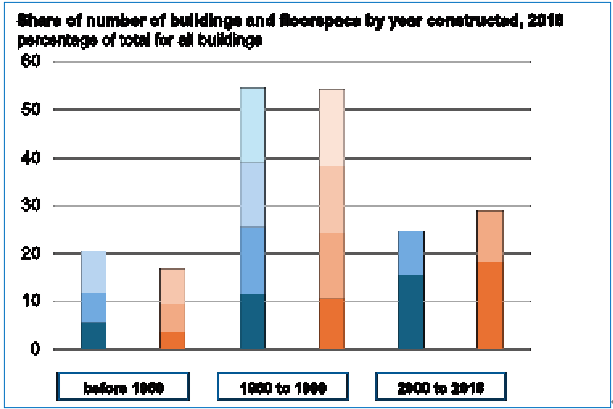
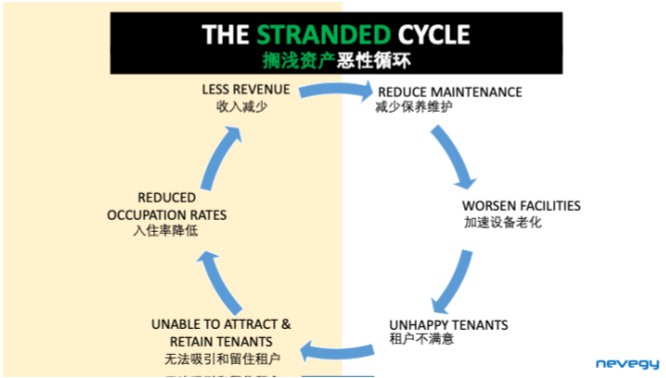
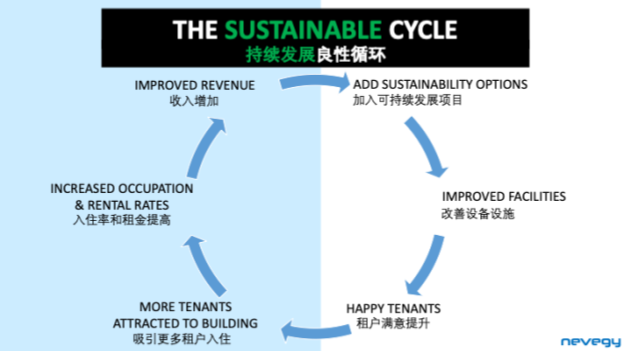

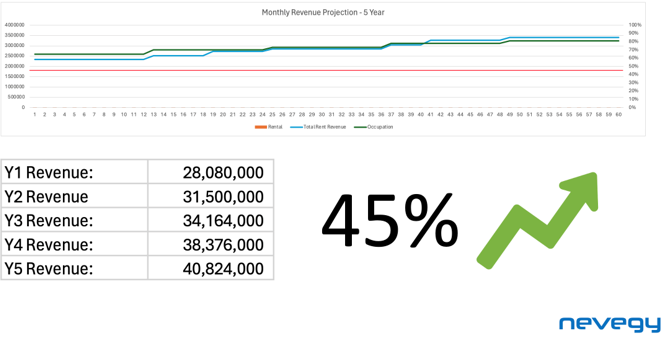
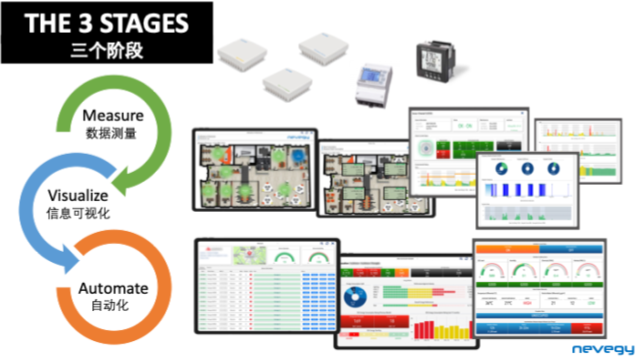
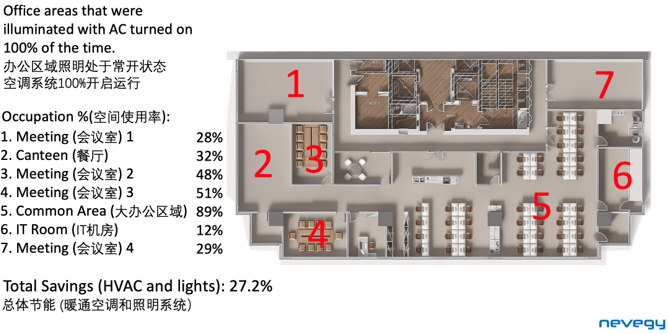



 沪公网安备 31010602001054号
沪公网安备 31010602001054号